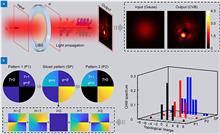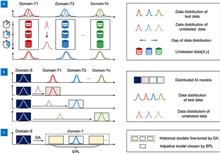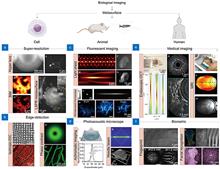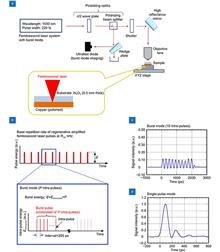 View fulltext
View fulltext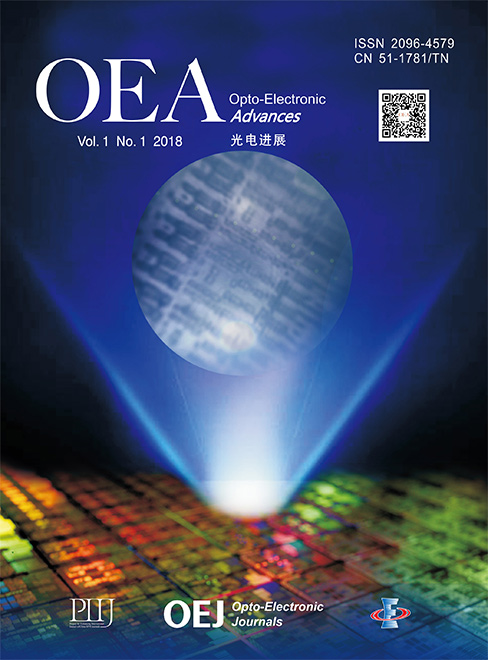
Intense vortex beam is expected to empower captivating phenomena and applications in high power laser-matter interactions. Currently, the superposition of multiple vortex beams has shown the unique ability to tailor and enhance the vortex field. However, traditional strategies to generate such beams suffer from large volume or/and low laser-induced damage threshold, hindering the practical widespread applications. Herein, a single high-threshold metasurface is proposed and experimentally demonstrated for the generation and superposition of multiple collinear vortex beams. This scheme takes advantage of the high conversion efficiency of phase-only modulation in the metasurface design by adopting the concept of a sliced phase pattern in the azimuthal direction. An optical hot spot with an enhanced intensity and steady spatial propagation is experimentally achieved. Moreover, femtosecond laser-induced birefringent nanostructures embedded in silica glass are utilized as the building block with high optical efficiency. Transmittance greater than 99.4% in the near-infrared range and laser-induced damage threshold as high as 68.0 J/cm2 (at 1064 nm, 6 ns) are experimentally verified. Considering these remarkable performances, the demonstrated high-threshold metasurface has promising applications in a host of high-power laser fields.
Artificial intelligence (AI) plays a critical role in signal recognition of distributed sensor systems (DSS), boosting its applications in multiple monitoring fields. Due to the domain differences between massive sensors in signal acquisition conditions, such as manufacturing process, deployment, and environments, current AI schemes for signal recognition of DSS frequently encounter poor generalization performance. In this paper, an adaptive decentralized artificial intelligence (ADAI) method for signal recognition of DSS is proposed, to improve the entire generalization performance. By fine-tuning pre-trained model with the unlabeled data in each domain, the ADAI scheme can train a series of adaptive AI models for all target domains, significantly reducing the false alarm rate (FAR) and missing alarm rate (MAR) induced by domain differences. The field tests about intrusion signal recognition with distributed optical fiber sensors system demonstrate the efficacy of the ADAI scheme, showcasing a FAR of merely 4.3% and 0%, along with a MAR of only 1.4% and 2.7% within two specific target domains. The ADAI scheme is expected to offer a practical paradigm for signal recognition of DSS in multiple application fields.
Advanced imaging techniques have been widely used in various biological studies. Currently, numerous imaging modalities are utilized in biological applications, including medical imaging, diagnosis, biometrics, and fundamental biological research. Consequently, the demand for faster, clearer, and more accurate imaging techniques to support sophisticated biological studies has increased. However, there is a limitation in enhancing performance of imaging devices owing to the system complexity associated with bulky conventional optical elements. To address this issue, metasurfaces, which are flat and compact optical elements, have been considered potential candidates for biological imaging. Here, we comprehensively discuss the metasurface empowered various imaging applications in biology, including their working principles and design strategies. Furthermore, we compared conventional imaging modalities with the metasurface-based imaging system. Finally, we discuss the current challenges and offer future perspectives on metasurfaces.
Light beams carrying multiple orbital angular momentum (OAM) states, which can be realized by the structured media with phase singularities, have attracted great attentions in the fields of high dimensional optical information processing. Alternatively, a simple uniaxial crystal can be used to simultaneously generate four OAM states of light through the second harmonic generation and cascaded optical spin–orbit interaction (SOI) processes. However, two of the OAM states realized in the crystal are very weak and limit the practical applications. Here, we aim to circumvent this constraint by using the sequential optical SOI processes in two crystals with threefold rotational symmetry. Four angular momentum states of the fundamental waves are prepared after the first crystal and then are utilized to generate the corresponding second harmonic waves (SHWs) with opposite spin and doubled OAM in the second crystal. Further through a sequential SOI process, totally eight angular momentum states of the SHWs with nearly equal energy are experimentally observed. The proposed methodology may find potential applications in optical communications, parallel optical computing, optical manipulation and so on.
High performance laser micromachining based on the combination of GHz burst mode femtosecond pulses irradiation and laser induced plasma assisted ablation can open a new avenue for high-quality and high-efficiency micromachining of single crystalline sapphire.







